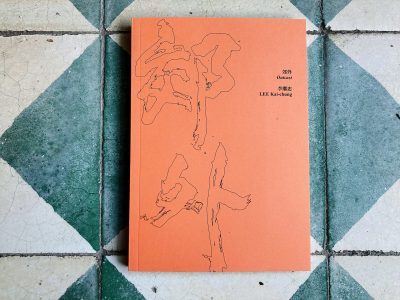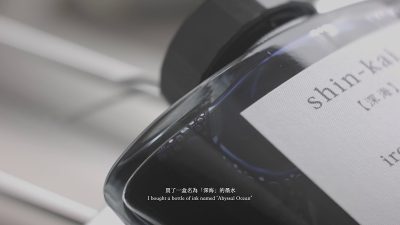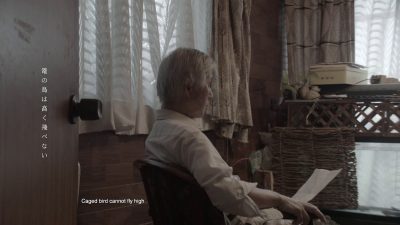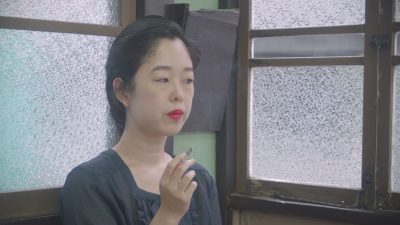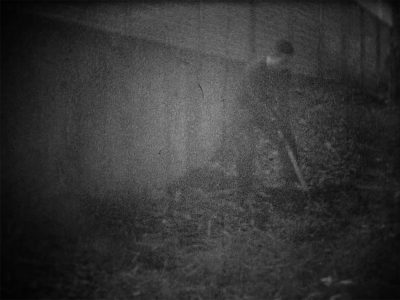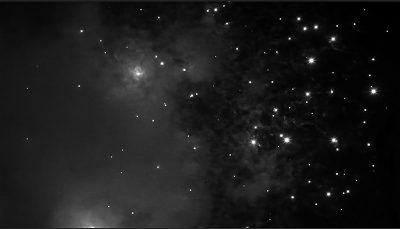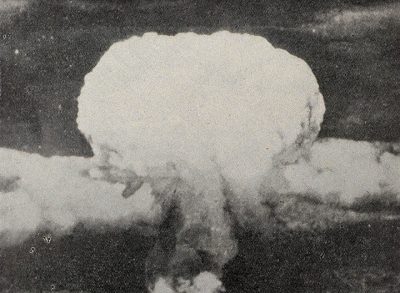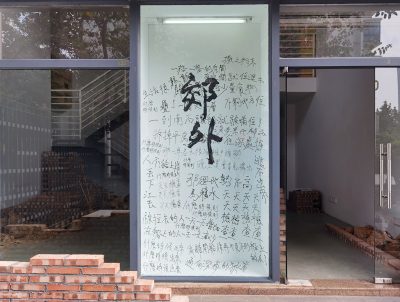Displacement >
The Narrow Road to the Deep Sea (2019-20)
The entitled project, The Narrow Road to the Deep Sea, aims to examine the notion of human displacement owing to a well-founded fear of being persecuted in World War II in Hong Kong, China and Japan.
This project centers in a notorious historical event, namely Nanshitou Massacre. Approximately 800 thousand Hong Kong refugees were being expatriated and repatriated by the Imperial Japanese Military Government between 1942 to 1945 due to various reasons. The refugees then reached Canton (Guangzhou city), being detained at Nanshitou Refugee Camp, and forcibly received a series of human experiments and bacteriological tests.
Through archival research, field study, and interviews, the artist explores the incident with creative impulses, including film, photography, performance and sculptures, in order to create a parallel discourse adjacent to the mainstream narratives, suspend the established historical judgment, re-discover and unfold details on humanity lurks deep within us all.
In an autographic manner, the project starts with Lee’s memory of having his first art figure drawing class in his middle school in the 90s. His art teacher brought out a real human skull from the storeroom. The head alludes the school history of being occupied and turned into the Fourth Military Hospital during the war, and how Hong Kong served as a rear front to cater injured soldiers and research new methods to counter Southeast Asia Infectious Diseases. Canton fell into the hand of the Japanese in 1938, which resulted in a massive influx of immigrants from Southern China cities to Hong Kong. Hong Kong absorbed refugees, and the population rose from 800 thousand to nearly 1.6 million in a few months. In 1942, the new Imperial Japanese Military Government launched a ‘Repatriation Policy’ so as to reduce the population of Hong Kong to half and minimise the cost of governance, consumption of food and water. Thousands of Hong Kong people were forced or directed into a refuge to Nanshitou Refugee Camp, in the upstream of Pearl River Estuary. Later, Unit Nami 8604 (波8604部隊) conducted various live bacteriological and chemical experiments on the Hong Kong refugees. During the detention, the tests consumed an enormous amount of pathogen and bacteria, and the unit requested supplies from the headquarter regularly. The artist revisited Toyama Park, the former Imperial Military Medical School campus, where was the major headquarter complex for researching, producing and supplying pathogen to various Epidemic and Water Purification Units in Greater Asia, and had a performance in there. By exercising hours of labour in digging a hole, the artist attempts to re-enact the war prisoners and refugees’ manual work at wartime while internalises subconscious stances behind the violence. A piece of blue canvas covers the depression, carrying rainwater, dirt and dust over time, gradually becoming an ordinary scenery in the park, like corpses being thrown into the pond of bone corrosion. After annihilation, it becomes a part of the sea, sinking and rising again.
Behind punishment and brutality, the project interweaves oneself with voices of the minorities, that unfolds humanity, psychological states and struggles for survival that are generally not perceptible in grand historical narratives. The refugee camp served as a detention terrain, place for experiment and collecting research data, and a limbo.
Research
It means I won’t be back
It means I won’t be back
A research project on “Sea” and “Diaspora” (Excerpt)
Text: LEE Kai Chung
[…]
After the War – On Heritage and its Conservation
On September 1, 2002, the Guangzhou Municipal Bureau of Culture listed the Guangdong-Hong Kong Customs and Quarantine Station of the Japanese Southern China Army Epidemic Prevention and Water Purification Unit under Registered Protected Cultural Relics in Guangzhou (CW84), a designation established in April 1941 during the Occupation period, when the Guangzhou Municipal Bureau of Public Works claimed part of the land at Nanshitou for the establishment of the Quarantine Station. It is the only listed historical building in the Nanshitou Incident, but six other architectural structures are still pending archaeological assessment. On February 22, 2017, representatives of the China Foundation for Cultural Heritage Conservation visited Nanshitou and claimed that they were considering raising funds for conservation and urban planning. In March of the same year, 23 members of the 12th National Committee of the Chinese People’s Political Consultative Conference (CPPCC) proposed to “build a monument and a memorial museum for the victims of the Japanese Army’s germ-weapon massacre in Nanshitou”, and resolved to “protect the ruins and architecture and prepare the memorial museum in phases”. Two years have passed, and when I conducted field research in Nanshitou between late 2019 and early 2020, the ruins of the refugee camp were surrounded by fences, and all buildings were basically demolished except for the walls of the automobile factory. There are also no signs, such as “Public notice of Historic Buildings” or “Protected Heritage”, in the vicinity of the refugee camp site, and some buildings are at risk of collapse as a result of dilapidation. For example, the main building of the Quarantine Station has been in disrepair for a long time; the roof has been severely damaged by typhoons and rain, and the internal ceiling shows signs of water leakage. Parts of the building were defaced, vandalized (ie. the ceiling at the top of the doorway showed signs of being burnt) and dismantled. The two stone pillars on either side of the main entrance and in front of it are painted with Communist slogans from the Cultural Revolution era, with a piece of paper with Japanese inscription still left on the ceiling of the main entrance, which theoretically should be preserved intact with the historical wholeness of a heritage. In 1994, the Director’s Room on the second floor was still there. In addition, the structure and pavement in front of the building were occupied and converted to the Nanhe Road Police Station, and a slope was built in the open space in front of the Quarantine Station, which leads to the residential houses on the hill. From a conservation point of view, the overall connectivity of the heritage was disrupted, as the Hong Kong refugees, upon disembarkation, had to go to the Quarantine Station for initial examination before being transferred to the refugee camp or other departments, or being directly released. Therefore, according to the map drawn by Mr. Leung from Shunde, Guangdong, the Quarantine Station was also called the “Upper Station”, while the “Lower Station” was another Quarantine Station in the west, now a residential area. The difference between “Upper” and “Lower” could be geographic locations or refer to the sequence in which the refugees entered Nanshitou, since “Lower” in Japanese has the additional meaning of “next place”. According to Professor Tan Yuenheng, after visiting the Quarantine Station in 2016 with volunteers and engineers, he felt the building was at risk of collapse and urged the heritage department to repair it, after which it was learnt that about RMB100,000 or so was granted to the department. Unfortunately, the relevant departments have not carried out any repairs at the time this article was written.
Another artifact related to the incident, the Memorial of the Guangdong-Hong Kong Refugees, is located in a neighbourhood along Nanji Road where a locked metal gate is installed, rendering it inaccessible to non-residents. There is also a lack of signage at the entrance to the neighbourhood. The open area around the memorial has been privatized by the neighbourhood residents, who store their personal belongings and generally occupy the space. Display panels showing the typical historical narrative of the Chinese Communist Party are installed behind the memorial, but rubbish has been stuffed behind the glass panels, and nobody appears to keep them tidy.
Professor Tan speculates that there are some other historical buildings whose heritage could hark back to World War II, such as a separate architectural cluster in the northwest of Nanshitou Village that could have been another Quarantine Station, as well as the kitchen of the refugee camp, or a Red Cross medical clinic on the hill (formerly ‘Japanese Hill’), etc. Existing references are mainly drawn from interviews of nearby villagers and refugees in the early 1990s, and at this stage, only reasonable inferences can be made based on the geographical context and Japanese deployment at the time, etc. After the founding of New China, there were new construction projects of the Guangzhou Automobile Factory and the Guangzhou Paper Mill Dormitory respectively in the district; meanwhile, villagers have also occupied and made various degrees of unauthorized building works or alterations to the above-mentioned buildings.
Many local researchers and citizens who are concerned about the incident have proposed to the Guangzhou Municipal Government to conserve Nanshitou’s heritage and promote its history, and even collaborated with local organizations to design a museum and theme park. However, the proposal was later shelved due to the demolition of the automobile factory, land ownership and the Guangdong government’s desire to use the former industrial site for commercial purposes, and also due to the pandemic in 2020.
At the original site of the refugee camp, Nanshitou 28 Creative Park has been planned, which falls under the governance of Qianzhan Industry Research Institute (前瞻產業研究院), an enterprise that claims to collaborate with the government, academic institutions and private corporates; it specifies that it works in real estate planning and big data research. Nearby, the 31 Road Photography Creative Park in the same district has already started running. The “Upper House” or Japanese Hill area is now occupied by various dwellings, and Nanshi West Village is mainly a residential area for factory workers, people in the recycling business and citizens who settled in after the war. The opposite bank of the Wood-washing Pond is still occupied by a group of factories. The area around Taikoo and Osaka warehouses in the north of Nanshitou has been successfully transformed from a cargo transfer station into a recreational and cultural district, with residential estates, hotels, shopping malls and commercial buildings. This gentrification is likely to extend to Nanshitou; with enterprises such as Qianzhan Industry Research Institute, which was originally dedicated to the development of light and heavy industry lots, now shifting to arts and cultural studios and technology research labs. I think it is less likely in the current development context of Mainland China that the city would choose to develop Nanshitou, with its beautiful scenic view of Pearl River, into a museum district purely for conservation and commemorating war history, instead of developing it into a multi-functional district with a mix of real-estate projects and commercial developments. On the other hand, it is a common practice for cities to expand into suburbs, and a large proportion of the historic sites are now built with residential high-rises, so one can imagine the serious impact on housing prices if the history of refugee camp and discovery of the corpses were to become part of the museum’s narrative. At this specific time, as a result, conservation and local development are at odds, and cooperation – or conflict – between corporations, plutocrats and the city government is becoming more obvious.
At the Fifth Session of the 12th CPPCC Committee, the suggestion was made that “the Municipal Cultural and Heritage Departments may take the lead in conducting an archaeological exploration of the relevant cultural relics”. This necessarily involves considerable difficulties because the area around Nanji Road, where the bodies were once excavated, has been developed into different small neighbourhoods. Once an archaeological survey must be conducted, a long-term negotiation and mutual agreement between residents and management companies has to be reached. If the survey is carried out at the Nanshitou Refugee Camp, the difficulty is relatively low, as the automobile factory has been demolished. However, In early 2020, I saw bulldozers begin to clear the rubble and ruins, presumably in preparation for construction, but it is unknown whether this is done by a private plutocrat or the city government. Once construction has started, even if there are new archaeological discoveries, I am afraid that transparency will be a crucial issue in the context of conservation. If and when more bodies are found – which would affect the reputation and profitability of future property projects – the developers will likely hide the discoveries in order to facilitate progress.
What has been discussed above relates mainly to the hardware of the incident. Moreover, if the heritage conservation of the architectural complex is to be advanced, the city government should invite historians and archaeologists to further study the deed of property, ownership and structure of the building based on official materials, while consulting with residents, a study on land resumption and resurveying need to be initiated. However, political factors and local power relations are likely to be crucial factors.
As for software and public education, a group of local educators and conservationists have conducted interviews with villagers and residents since the 1990s. But I believe that a more systematic and longitudinal study is required, covering the following: firstly, interviews with the surviving workers of the Paper Mill and the automobile factory; secondly, interviews with the local villagers and the surviving refugees; and thirdly – which is exactly what I am doing now with this project – is to initiate an open call to the public in Guangdong and Hong Kong through social-media platforms and local contacts, to find all the Hong Kong refugees who were repatriated at that time, as well as their relatives and second or third generations. According to Feng Qi, a survivor from the camp, “When the Kuomintang was about to take over the refugee camp before the Japanese surrender in 1945, there were few refugees left in the camp, especially those from Hong Kong. Thousands of refugees were released and scattered. ” In addition, Hong Kong refugees had the opportunity to stay and settle in Guangdong Province and even other cities in Mainland China after the war, so there are many unknown factors in the third initiative, which will require more manpower and time to investigate. In the open call, I am mainly concerned about the identities of the deceased refugees, and the lives of the refugees after the war.
[…]
Since last year, the pandemic has in some ways created a stronger connection to and empathy for the Nanshitou Incident, even if what I am feeling at the moment is far less than what the refugees suffered. This project has been shown in various exhibitions and occasions, and each time I tried to legitimize a connection to the venue. The exhibition at HB Station Contemporary Art and Research Center was not only a remnant of a scene from fragmented memories, but also led the audience and participants into two public programmes: a walking tour entitled “A Walk by the Sea” and an open-air screening. The latter made me contemplate once more the meaning of the work in relation to the present and the locality. The screening, in the original location of the refugee camp, moved me more than ever. I did not have preconceptions about how the villagers would perceive this so-called artwork, or whether the mysteries of history would be resolved. The screening was filled with a young audience, while elsewhere, villagers were discussing how their grandparents survived the occupation. An older woman was walking back and forth within the area, another villager stopped by and watched the film while she was walking her dog, and a solemn-looking subdistrict officer took plenty of pictures. While he was paying attention to the content of the video, he was also distracted by the reaction of the audience. The monologues and sound effects with the projection became intertwined with the sound of cargo ships chirping on the Pearl River in the distance, and workers renovating the Shrine of Merit behind the audience. Perhaps I cannot expect a single project to re-organize all the historical complexities, nor are the “new discoveries” of my research are necessarily inspiring; but by taking the work out of its conventional artistic realm, and adding a sense of everydayness and locality, overlapping it with the realities of daily life, at least it opens up the possibility of dialogue with various kinds of people.
During the project, I interviewed a 93-year-old lady who had experienced the refugee camp, the end of World War II, the Chinese civil war, New China, the Communist era, etc. I put her and her interview into the work that was shown in the outdoor screening: The Narrow Road to the Deep Sea, Part V: The Remains of the Night (2020). During the interview and conversation with the woman, she repeated that what had been engraved in her mind was not the misery of the war and the ease with which people could control their fate, but the fact that for the next 80 years after the war, while remaining unruffled having experienced so many ups and downs, the social welfare system was what could comfort her heart. That is her reality, existing outside of the numbers and causes and consequences recorded in the archives.
While artists hope that their works don’t merely create a definite conclusion of history, we always believe that the imagination brought out by art is productive and meaningful to real life and that the audience can fill the void with their own conclusions. When discussing this notion with my fellow artist Zhu Jianlin, he mentioned that the younger generation may be resistant to fill in and create when they are given this imaginative space, because authoritative education and the social and institutional framework over the years have diminished the mechanisms, vocabulary and techniques for generating “imagination”, which is, as mentioned earlier, one of the fundamentals for critical thinking in historical research. In a sharing session at HB Station, a friend questioned how this project could be expanded. Perhaps the artist could promote the openness and creativity of history on an epistemological level through works of art, just as I have postulated, by reorganizing and criticizing history and the present. In addition, I deeply believe that the perception taken by the artwork transcends rational thinking and language, and the shimmering light can stimulate the pursuit of goodness in human nature, showing empathy and care to the suffering and to the world.
(Article was written in June 2020, revised in February 2021.)
The essay was published on OUTCAST (2021).
Review
You do see me crossing the meadow stiff and dead from the mist?
“You do see me crossing the meadow stiff
and dead from the mist?”
Text: ZHANG Yu-hang
In Hidetaka Miyazaki’s Dark Souls 3, “Aldrich, the Devourer of Gods” foresees the coming Age of the Deep Sea. In the game, the Age of the Deep Sea is (implicitly) described as a world where silence and all life will return to stillness, ruled by the ‘Deep’.
The Deep Sea is the ultimate in fascist aesthetics. The supremacy and fatalism of violence turn to a subtlety, long and deep silence. Most of the monsters in Dark Souls are silent, in Aleksandr Sokurov’s film, the Showa Emperor’s [1] Japanese phrases convey nothing. Upon entering the exhibition, The Smoking Lady smokes cigarettes in silence. Her delicate short hair is thought to confront an unpredictable fate, but it exposes her. Rather than fleeing from danger, she is herself the bait for that supreme violence. The exile of the refugees, the concentration camp, the germ experiments of Unit 8604, must have required a smoking beauty to complete the seduction of the victim’s complicity with the persecutor in “The Death’s Appointment in Samarra”, which the world mistakenly calls fate.
However, the fascist aesthetics is not bailed by the production of nostalgic Romanticist desires. In contrast, the Cold War spacecraft was derived from the angels in the ancient Greek frescoes and tantric mantras of Esoteric Buddhism, and the three narrow routes to “the Deep Sea” were, in fact, shortcuts in the vast system of warfare and material hubs that Japan used throughout Southeast Asia (including Southern China, Hong Kong, Taiwan and the Malay Peninsula, in fact from the British colonial period). And Hong Kong, whether as the “Pearl of the Orient” during the British colonial period, or as the hub of the cold and ambiguous love of Cyber in the 90s, or as the escapees of the present-day held hostage by the powers through the Hong Kong Extradition Bill, the “beauty” exudes a deadly allure on the Narrow Road. It is only that the model of the system and the plan is more real than the reality, where the undertones of reality deepen gradually, and the pure darkness awaits after the limits; the paradise always turns into a dark “Deep Sea”, where the waste disposal center of the whole system eventually engulfs everything. That’s why The Digger is a testament to the old alchemical maxim: As Above, So Below. The logistical chains of death soar and a magnificent yet inverted metropolis are built at the seabed. The Deep Sea is a matter, a hard and muddled substance. Mechanical and repetitive consumption, that is the figure that operates at the bottom of the sea.
The nature of the Japanese language is that it can convey messages while dissolving nothingness. Whether it is the rhyme of the refugees in the Nanshitou concentration camp (The Enka Singer) or the pale yet strong words delivered by the Japanese soldier while he was defending himself in the post-war Court-martial in Guangzhou in George and the Swimming Pool, their messages seem to dissipate into the uneven brick walls in the exhibition, reflecting the speechlessness of the skull stuck to the swimming pool. In George and the Swimming Pool and Outcast, the artist’s speech is clear and precise, almost to the point of ‘stickiness and dizziness’, and we cannot help but question if the monologue in Outcast is the sound of a living creature.
In Dark Souls 3, Aldrich attempts to continue the Age of the Deep Sea in his prophecy through eating people (and eventually, gods). Gradually, he comes to possess the minds and memories of the people and gods he devours. Unbeknownst to him, it is through his endless devouring that he becomes part of the Deep, just like Unit 8604’s bone-dissolving pool at Nanshitou, ‘made of human bodies, becomes the Deep Sea’, as the artist puts it.
You do see me crossing the meadow stiff
and dead from the mist?[4]
– Robert Walser
[1] Sokurov, Aleksandr, The Sun, 2005.
[2] Unit 8604 was the Japanese Guangzhou 8604th unit during the invasion of China, and is thought to have conducted germ warfare and live bacteriological experiments. The Nanshitou Refugee Camp mentioned in The Narrow Road to the Deep Sea series is thought to be associated with its bacteriological experiments.
[3] There was a merchant in Bagdad who sent his servant to market to buy provisions and in a little while the servant came back, white and trembling, and said, Master, just now when I was in the marketplace I was jostled by a woman in the crowd and when I turned I saw it was Death that jostled me. She looked at me and made a threatening gesture, now, lend me your horse, and I will ride away from this city and avoid my fate. I will go to Samarra and there Death will not find me. The merchant lent him his horse, and the servant mounted it, and he dug his spurs in its flanks and as fast as the horse could gallop he went. Then the merchant went down to the marketplace and he saw me standing in the crowd and he came to me and said, Why did you make a threating getsture to my servant when you saw him this morning? That was not a threatening gesture, I said, it was only a start of surprise. I was astonished to see him in Bagdad, for I had an appointment with him tonight in Samarra. (O’Hara, John, Appointment in Samarra, 1934).
[4] Walser, Rober, Oppressive Light: Selected Poems by Robert Walser, Black Lawrence Press, 2012.
Seeing “those who parted by unexpected fate”
Seeing “those who parted by unexpected fate” (Excerpt)
Text: Zhang Zimu
I still remember The Relentless Voyage, a public event organized by Chung during his WMA exhibition. No event details were given except for simple security rules to obey on the sea. The other passengers happened to also be women. Wearing masks, we all sat quietly in our own chosen corners on the boat. In the one hour and a half journey, the only sight was the Hong Kong coastline gradually extending to the estranged and remote side. The sole familiar image was the bumping gesture and the taste of nausea rising within my body. With the projection of the exhibition, I first considered it a journey of “experience”, to feel what the refugees of forced migration experienced in reductionist ocean travel. The sense of moral ambiguity and bewilderment occupied the first half of my journey. However, in the casual chat after the returning trip, I was surprised to learn the drastic difference in participants’ feelings. One foreign artist felt complete liberation and ease as she was just out of the hotel quarantine. Even with a loaded mind, I still saw many surprising scenes, including a butterfly vigorously crossing the sea against the wind, a small ancient temple by the seawall and a man fishing outside a tent… All these subtleties were not to be reduced by the extrinsic frameworks like “return to” and “re-experience” history. Chung documented every such journey with video, sound and texts, as well as participants’ immediate feelings. These documentations may be merged into the following exhibitions, making another “Archive of the People.”
After researching historical archives and visiting historical sites, what Chung did was not to visualize historical data, nor to seek responsibility and make accusations. Rather he chose to do something possibly more difficult, by projecting and performing with his own body and senses to generate empathy. The two-channel video The Remains of the Night fabricated an intimate solace between two survivors of the Nanshitou refugee camp. When tongue was cut bit by bit, skin withered slowly, gnawed over by mosquitos with malaria…this absurdity of war was conducted rationally in the name of science. Yet two lives cast in the mess still had the opportunity to meet and watch the new year fireworks, to have an instance of liberation and transcendence, before their fatal fates. Different from passionate death lavishly rendered by patriotism, Chung distinguishes tender but tenacious and abundant humanity as well as affection amidst despair. If war is a means of dehumanization, the popular historical dramas are transhumanistic depictions of both heroes and enemies. Chung builds up a quotidian theatre with filmic writing on the debris of historical archives, in which the strangers that enter, regardless of identity, all behold rich affections and sensibilities, and are capable of making dialogue with modern viewers in different shores of the historical flow.
When I listened to an online discussion at HB Station, some audiences expressed their doubt over the ethics of Chung’s working method. Chung responded that he believed in personal instinct and motivation. The seemingly objective data and descriptions cannot get us closer to a real living person. This could be associated with how we understand “empathy”. According to scholars Hans A. Alma and Adri Smaling (2011), empathy is not pure psychological identification and “to be one”, as one individual can never really switch to be the other and experience what the other has been through. Therefore, they suggested, empathy was to place oneself in another’s experiential world, through the imagination of their own emotions (p.203-204). I sense such empathy in Chung’s works. When describing the burning experiment in a laboratory, he filmed his own arm with tattoos. The above-mentioned firework element was historical, it also stemmed from his visual experience of Japan’s summer fireworks during an artist residency program, as well as the then haunted news coverage of the tear gas smog in Hong Kong streets. Moreover, the artist himself had displaced his own body to enter the recreated historical terrain to sense and act. In another video The Digger, he went to the Toyama Park in Shinjuku district of Tokyo, one of the former laboratory sites affiliated with Unit 731, started digging a tomb for himself among passersby’s reserved manner or indifference, like many refugees, were forced to do so. When we look into the screens, are we emotionally much closer to the observers in history and in present times, or the forced tomb diggers? This is the openness of Chung’s works. The incorporation of his quarantine experience into the exhibition curation also shows a sensitivity for his own body while persistently executing a working methodology to access the other through the self.
Scholar and curator Jill Bennett (2005) wrote in a book on trauma and art, that this type of art is more transactive than communicative, “it often touches us, but it does not necessarily communicate the ‘secret’ of personal experience” (p.7). The distinguishing feature of Chung’s work also lies in the further entanglement with the “transactive”, putting the highly tenacious identities to overlap in an obscure and ambiguous space. In The Enka Singer, a Japanese elder, who participated in the Japanese student movement, performed the poem from Nanshitou camp in the style of Japanese traditional Enka; A Japanese friend of the artist acted as a young Hong Kong lady during wartime (The Smoking Lady), who smoked the last cigarette before she had her hair cut to disguise herself as a man and flee. In these performances that broke through the boundary of the epochs of geography, confined nationalities and body politics became dubious, their contradictions explicitly revealed.
This series of works was created from 2019 to 2020, parallel with rising global social movements and the outbreak of the Covid-19 pandemic. The imagination and conjecture of war have flooded social media, borders, as well as identities, which have frequently been the triggers for social debates. The narrative built around the Nanshitou refugee camp also contributed towards the shifting boundaries around being a “Hong Konger”. The Nanshitou refugee camp was built on the condition of the explosion of the WWII population in Hong Kong. After the Japanese army occupied Guangzhou, a large number of Canton refugees fled to HK and caused a resource shortage. The Japanese army aimed to reduce the Hong Kong population by publishing the repatriation policy, which used deceptive methods to send back 500,000 to 800,000 refugees to China, including a ratio of Hong Kong residents whose ancestral hometowns were in Canton. Many lost their lives during the sea voyage and later in the Nanshitou refugee camp. For the Hong Kong exhibition in March 2020, several review articles referred to these refugees as “Hong Kong refugees” or “Hong Kongers”. Among them, one article clearly stated the correlation with the Anti-Extradition Movement, describing a historical precedent of extradition to China, overlooking the misplacement of identity and borders in the event. When compared with Hong Kong-Canton discussions nowadays, this conversation on identities becomes rather intriguing. Chung openly confessed his inspirations stemmed from violent migrations in history and the drifting condition of Hong Kong today in terms of his own work. This reflection is not a linear comparison of past and present, but constantly opening up bifurcations on smooth narratives.
As I recounted my sea voyage from Sai Wan Ho ferry pier into the South China Sea, I only realised that we might have crossed the border through the sight of a boat hanging the Chinese national flag. While breathing cigarette fumes with the Japanese/Hong Kong/Canton lady, I sensed the artist refused to ascribe to the dichotomous thought behind geo-war and body-war. Facing the historical ruins and comebacks of new struggles, any clear border narration risked impotence and futility. However, using art as a means for border-crossing and chronotope-transpassing, as well as entering “The Narrow Road to the Deep Sea” with someone’s own physicality, makes it possible for us to see “those who parted by unexpected fate”—— as Chung once wrote in his work.
Reference:
Bennett, Jill. Empathic vision: Affect, trauma, and contemporary art. Stanford University Press, 2005.
Alma, Hans A., and Adri Smaling. “The meaning of empathy and imagination in health care and health studies.” International journal of qualitative studies on health and well-being 1, no. 4 (2006): 195-211.
